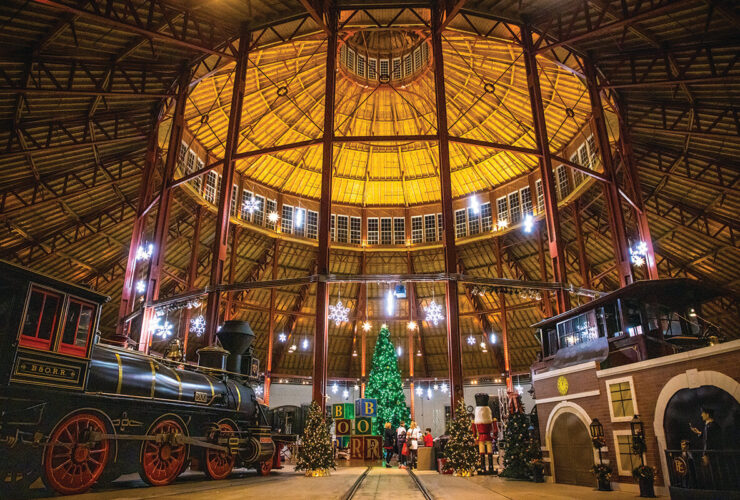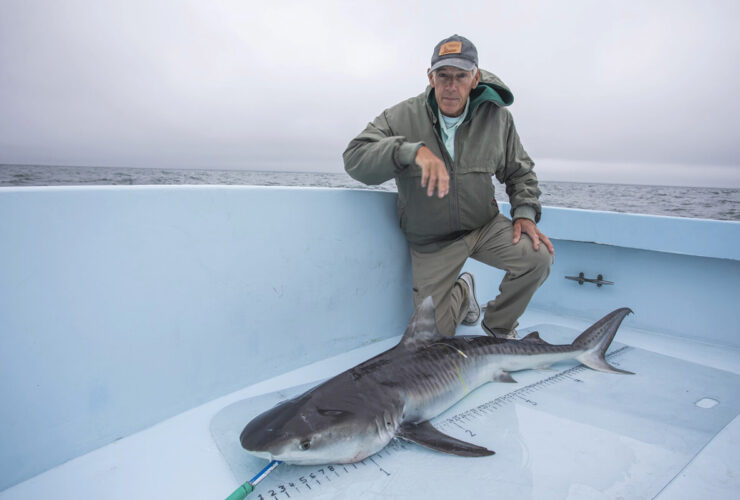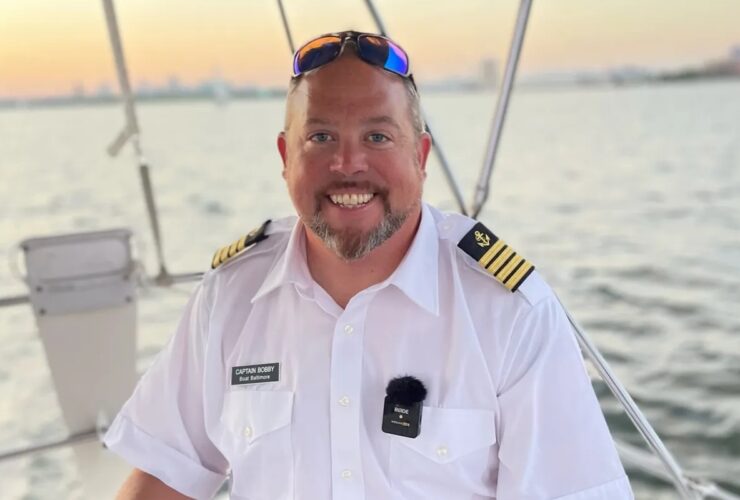
Travel & Outdoors
Old Faithful
A beacon of history and nostalgia, the Oxford-Bellevue Ferry celebrates its 335th birthday this year.
 here are few signs of life in the tiny town of Oxford on Maryland’s Eastern Shore. There’s one road in, one road out, and one set of stoplights that blinks outside the fire hall full of shiny, yellow engines. “For Sale” signs stick in the manicured lawns of charming old Victorians that all sit sandwiched together along the long and narrow main street. There is no café or gas station, no hospital or school. But at the end of the road, past the old oak trees, brick sidewalks, and white picket fences, a crowd of people wait in line at the edge of the Tred Avon River, where the pavement seems to tumble into the bay. A mix of locals and tourists, most wait in cars, some lean on bicycles, but they’re all here for the one thing that keeps people coming to this cozy corner of Talbot County: the Oxford-Bellevue Ferry.
here are few signs of life in the tiny town of Oxford on Maryland’s Eastern Shore. There’s one road in, one road out, and one set of stoplights that blinks outside the fire hall full of shiny, yellow engines. “For Sale” signs stick in the manicured lawns of charming old Victorians that all sit sandwiched together along the long and narrow main street. There is no café or gas station, no hospital or school. But at the end of the road, past the old oak trees, brick sidewalks, and white picket fences, a crowd of people wait in line at the edge of the Tred Avon River, where the pavement seems to tumble into the bay. A mix of locals and tourists, most wait in cars, some lean on bicycles, but they’re all here for the one thing that keeps people coming to this cozy corner of Talbot County: the Oxford-Bellevue Ferry.
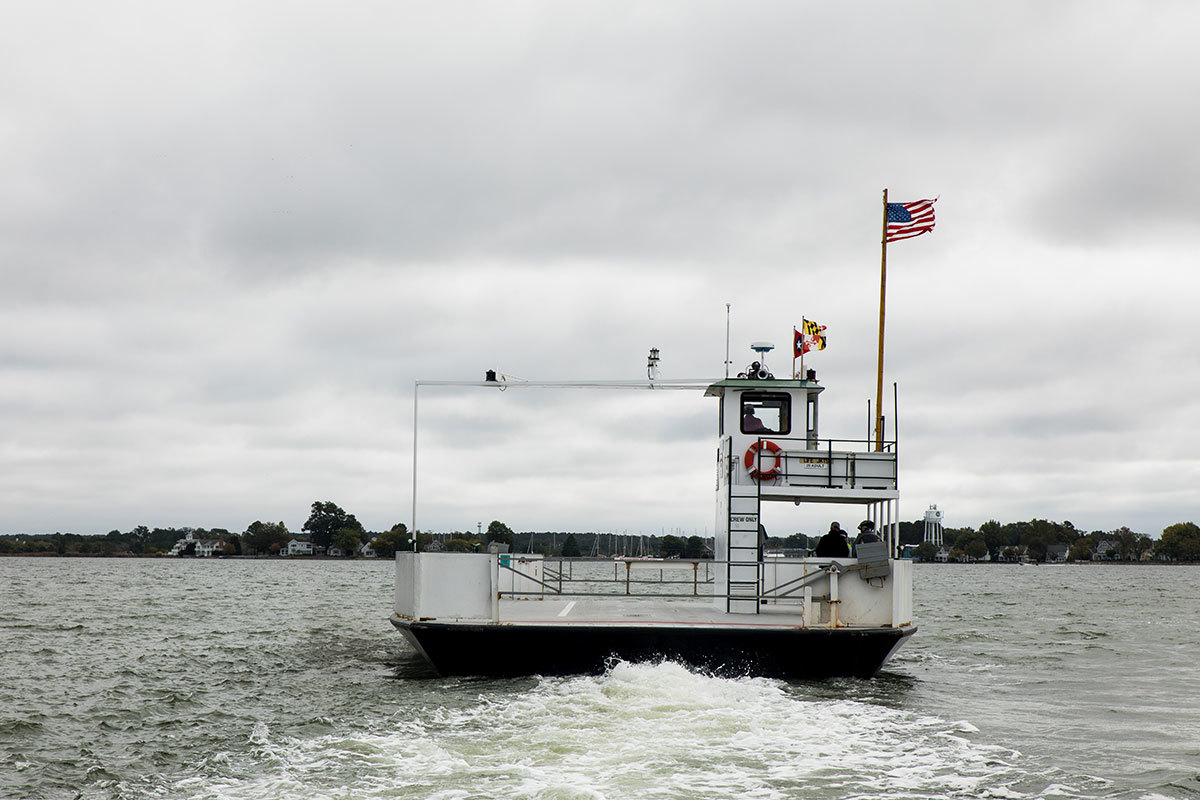
► The Oxford-Bellevue Ferry crosses the Tred Avon River in Talbot County.
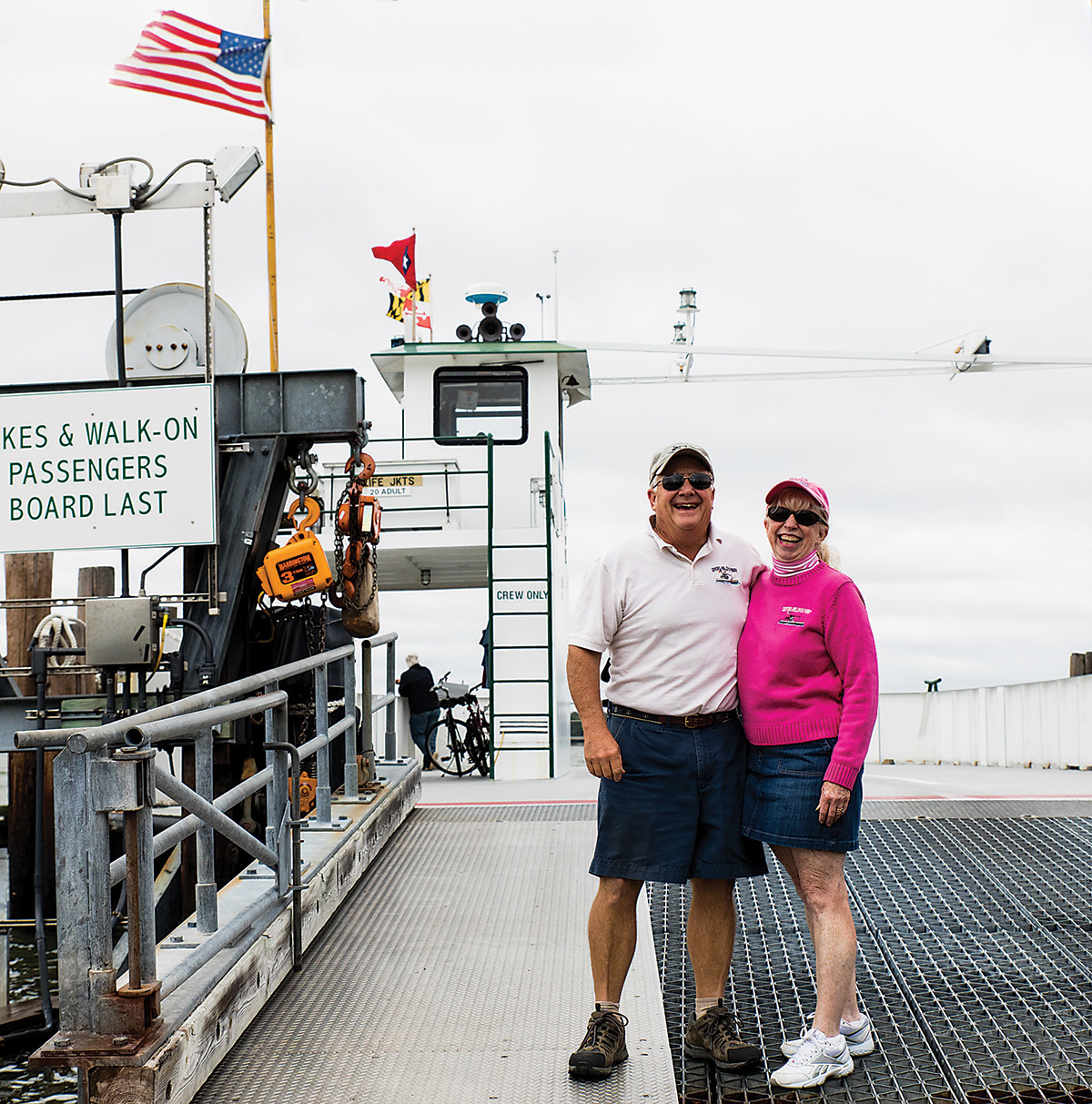
► Tom and Judy Bixler have run the ferry for the past 17 years.
Across the water, toward the hamlet of Bellevue, a small white speck gets larger and larger as it returns to the southern dock. Soon enough, the air fills with the cacophonous sound of churning water and the guttural chug of diesel engines. A Maryland flag flaps in the breeze as the nine-car ferry eases toward its slip, and owner Tom Bixler grabs a line from a nearby piling. With a heavy clank, he lowers a ramp onto the boat’s deck, and with everything in place, lifts a thin metal gate and sends his passengers on their way. Judy, his wife of 44 years, waits up top at the wheel, the radio murmuring in the background, as the next queue of passengers begins to pile in.
“If you had asked me if I was going to be a ferryboat captain when I was a little girl, I would’ve looked at you like you were crazy,” she says with a laugh, her blonde ponytail spilling out of a bubblegum pink baseball cap that matches her turtleneck and sweater. “But we’ve had a lot of fun—as they say, this is our ferry tale.”
As the ferry’s owners and operators for the past 17 years, the Bixlers have not only landed their dream retirement gig, but also a piece of Maryland history. This year, the three-quarter-mile ferry line will turn 335, making it one of the oldest privately owned ferries in the country (the Rocky Hill-Glastonbury ferry in Connecticut is said to be the oldest at 363) and some nine decades older than the United States itself. “Most people can’t even comprehend that,” says Tom. “Before this was even a country, the ferry was here.”
Early accounts are somewhat spotty, but we do know the ferry was founded on November 20, 1683, as a service for “horses and men” between the bustling port of Oxford and what would become the Bellevue community in Royal Oak, just outside of St. Michaels. The first owner was a London merchant by the name of Richard Royston who operated the vessel for 2,500 pounds of tobacco a year. As one of Oxford’s founding fathers, he was a man about town, with a nearby island named in his honor. (Though he would later lose his reputation, being convicted of forgery before grovelling his way out of a public whipping and later dying at sea in the 1690s.)
“We’ve had a lot of fun,” says Judy. “As they say, this is our ferry tale.”
From there on out, the evolution of the ferry and its town would reflect the ebb and flow of their soon-to-be new nation. In its beginnings, Oxford was a nexus for trade, its waters filled with ships bringing goods to and from the colonies. By the American Revolution, it suffered a series of blows as British commerce dried up and wheat replaced tobacco as the new cash crop, but later made a comeback during the post-Civil War oyster boom and with the advent of canning, when seafood and produce packinghouses peppered the banks of the Chesapeake Bay. At one point, in the late 1800s, Oxford even rivaled Ocean City as the premier destination for summer vacation.
All the while, ferry service transferred hands between local innkeepers, even landing under the stewardship of women. Judith Bennett ran the boat through three different husbands in the 1700s and for more than a decade by herself “between spouses.” Throughout its history, at least five other women would run the ferry, some alone and others with partners, like Judy and Tom.
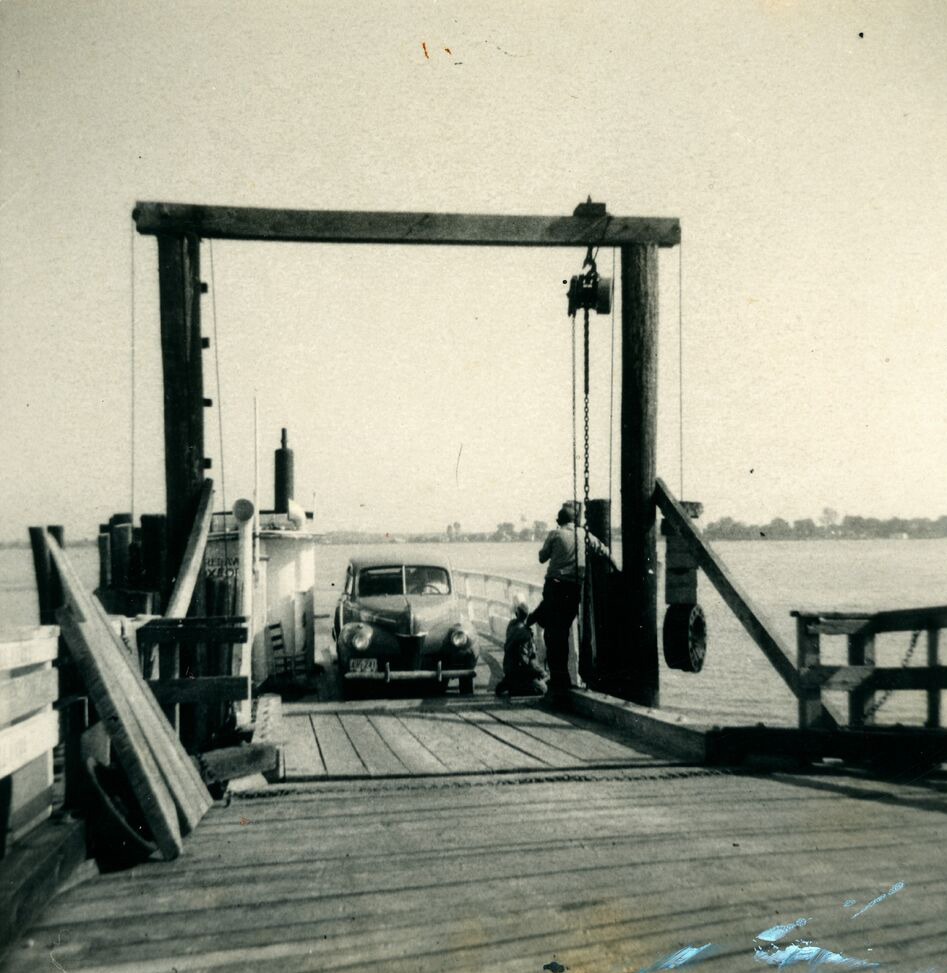
► The ferry in the late 1940s. Courtesy of the Chesapeake Bay Maritime Museum
Different vessels would also come and go, with upgrades and innovations added to each new incarnation. The old wooden sculler of the 1750s, powered by sails and oars, would later be towed alongside a new, coal-fired steam tug in the 1880s, reserved for carrying passengers’ horses, wagons, and, eventually, automobiles. By the 1900s, the tug had “a habit of sinking during the night,” as an old crewman once put it, and was replaced with an improved, gas-fueled version before moving aside for the first self-propelled ferry of the 1930s, built in Oxford, where working boatyards still dot the shoreline today. In the subsequent decades, she grew in size, making extra room as cars became commonplace.
In the mid-1970s, Captain Gib Clark brought a fortuitous new boat down to Oxford from New York, where it had previously run as the Shelter Island ferry. It was on that same Long Island line that Clark had mentored a young Tom Bixler, who started as a deckhand before working his way up to captain. “Gib gave Tom a chance,” says Judy. “The ferry was in his blood.”
Tom and Judy first met in 1971 as lab partners at St. Lawrence University. One day, while sitting on a split-rail fence with Tom’s roommate, the grown men’s weight snapped the wood in half and, in their fall, broke Judy’s leg. “I always say he had to break my leg to catch me,” she jokes, “and the rest was history.” The two married, raised three children, and embarked on many an adventure along the way—moving between suburban New Jersey and upstate New York, driving a motor home across the country, and cruising a sailboat up and down the Atlantic Coast after becoming empty nesters.
► Judy steers the ferry from the wheelhouse.
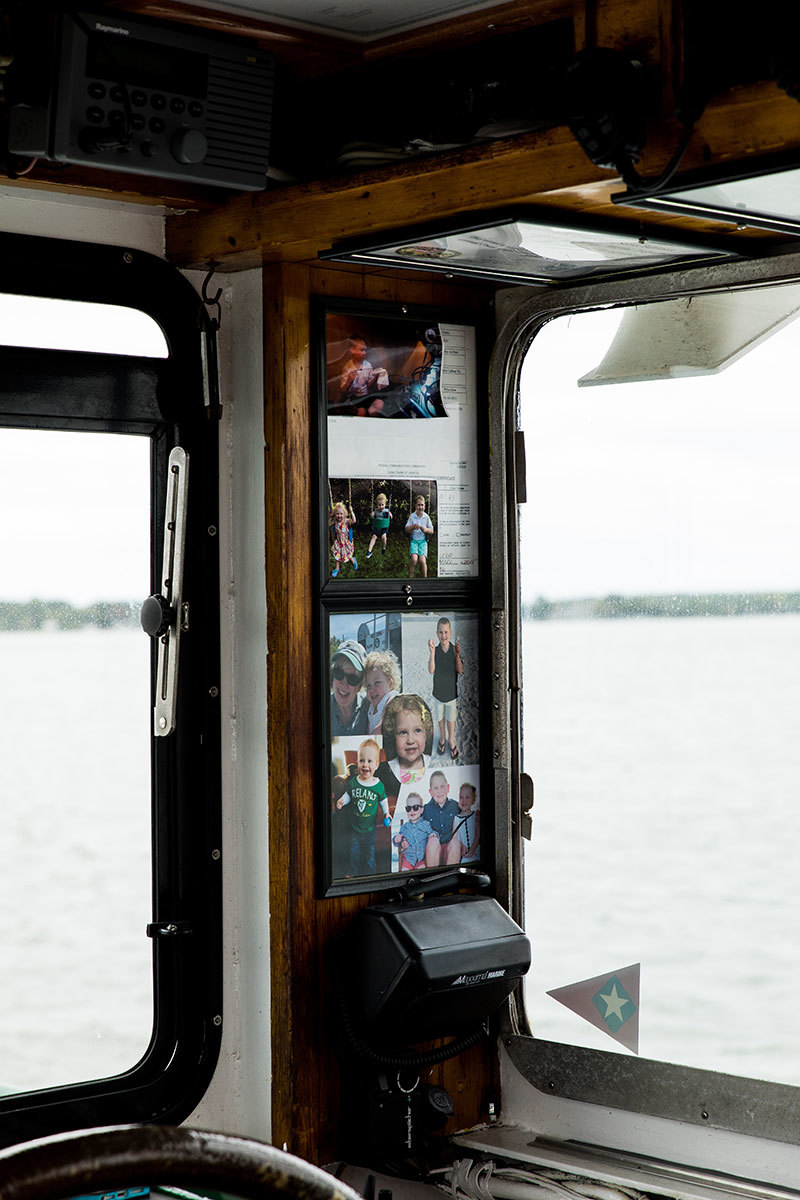
► Family pictures of the Bixler clan.
But ever since those days on Long Island, Tom had dreamed of retiring to the water with his feet on board a ferry. In a twist of fate, Captain Clark’s daughter, Valerie, had taken over the Oxford-Bellevue operation with her husband, David, and after nearly 30 years as its keepers, they were ready for their own retirement. In 2002, the Bixlers bought the boat—then and now the Talbot, powered by the more efficient diesel fuel and crafted out of the more durable and forgiving steel at the famed Blount Shipyard in Rhode Island—and the couple now lives exactly three miles from its dock. “We just fell in love with this place,” says Judy. “It was our dream. And it keeps us busy. Tom’s just not the kind of guy to sit around and read a book.” “I like to read,” he quips, “just not all of the time.”
Both volunteer around town—Judy for the local tourism office and, up until recently, Tom at the fire hall, with its blinking lights. Their kids visit occasionally, but largely it’s just the two of them, seven days a week, April through November, out there on the water.
With both Bixlers carrying a captain’s license, Judy usually mans the morning shifts while Tom works in the evenings. A group of retirees and students help out as well, tying the lines and collecting fares for as little as five dollars. On days they work together, the couple tosses a coin to see who will run the boat or walk the deck. “Tom lost a flip today, which is why I’m up here,” gibes Judy, “though it is fun to be down there, visiting with all the passengers.” Those guests run the gamut, with locals riding for leisure and tourists hailing from around the world—Europe, Asia, Australia—even including a few celebrities. There are politicians, like part-time residents Dick Cheney and Donald Rumsfeld, and movie stars, including Sarah Jessica Parker, who came to town to film Failure to Launch, and Vince Vaughn and Owen Wilson, who shot Wedding Crashers in St. Michaels. “People always say, ‘Oh, don’t you get bored?’” says Judy. “But it’s really never the same.”
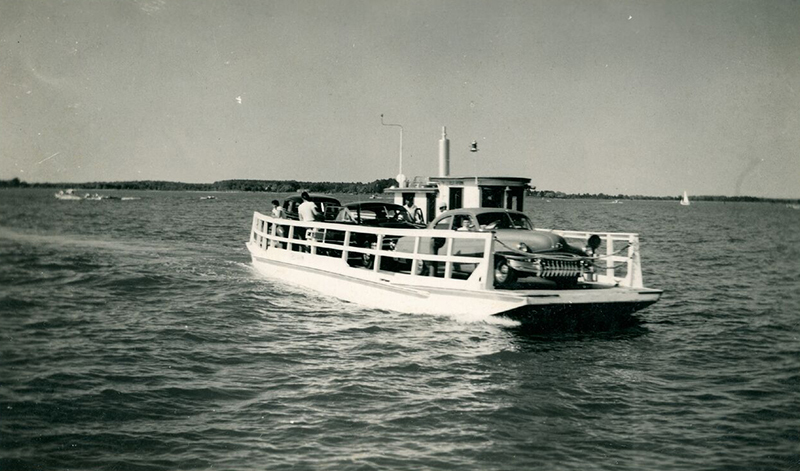
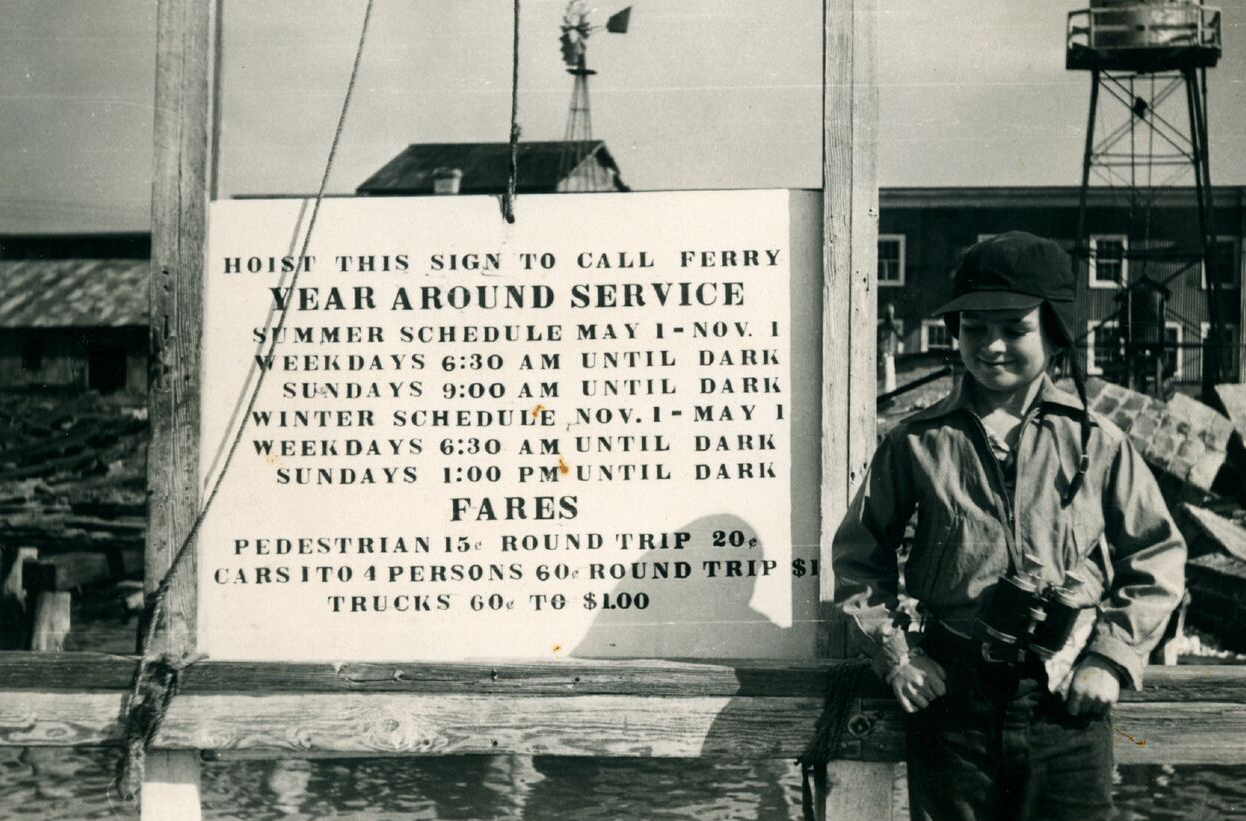
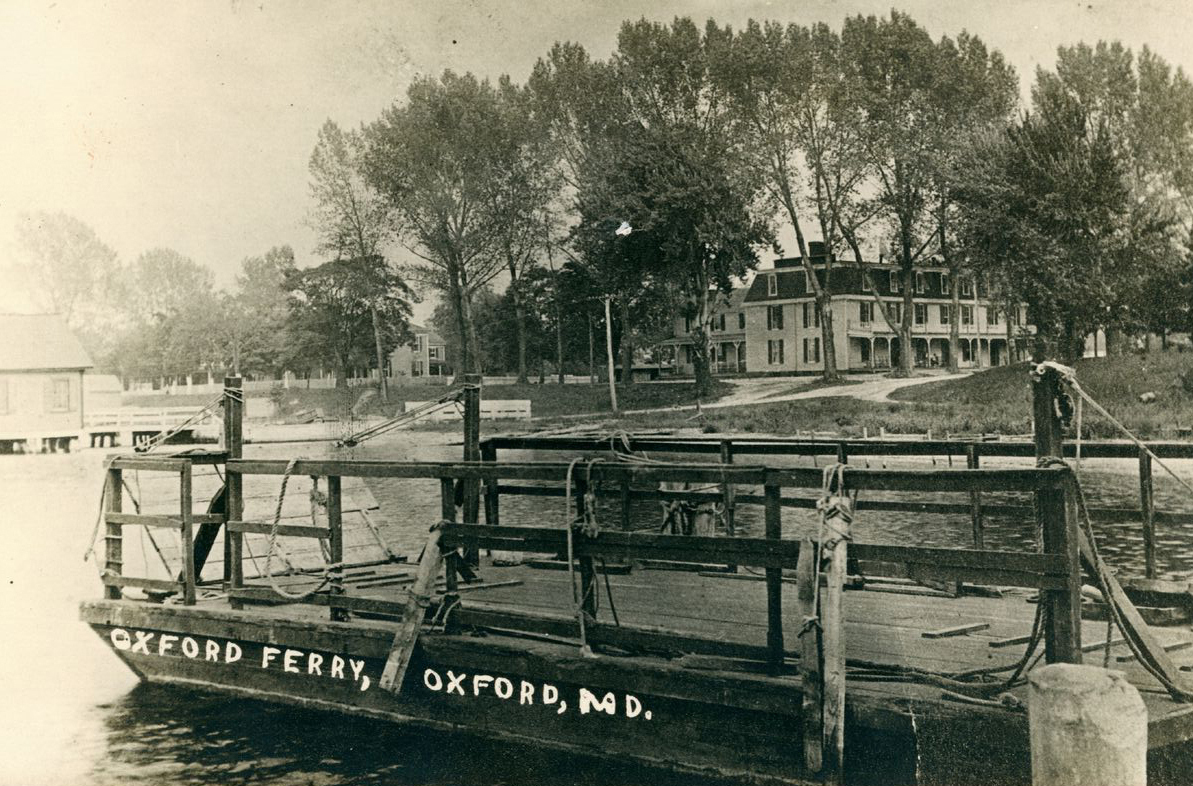
► Clockwise, from top: The ferry carries cars in the 1950s; a young boy stands outside the ferry’s fare sign, circa 1950; the ferry outside of what is now the Robert Morris Inn, circa 1930. Courtesy of the Chesapeake Bay Maritime Museum
Even at a maximum speed of five knots (less than six miles per hour, “and that’s movin’,” cracks Tom), running the 45-ton ferry is anything but simple. At 65 feet long and 30 feet wide, it has two steering wheels, two engines, two rudders, and two propellers, allowing it to go forward and backward without ever turning around. “You can’t learn it from reading a book,” says Tom. “It’s like driving a tractor-trailer.”
In the summer, there are also the town’s beloved log canoe races to contend with, and from spring through fall, they tango with the watermen. “You always have to pay attention,” says Judy. “You never know what you’re going to run into,” be it swimmers, boaters, or bad weather. Neither minds the rain, but past storms like Hurricane Isabel have battered their slip, forcing the county and state to swoop in with reinforcements to keep the ferry afloat. Tom takes great pride in keeping the 1980 Talbot spick-and-span himself, with regular upkeep and fresh coats of green, gray, and white paint. Looking at her today, you’d never know she’s nearly 40.
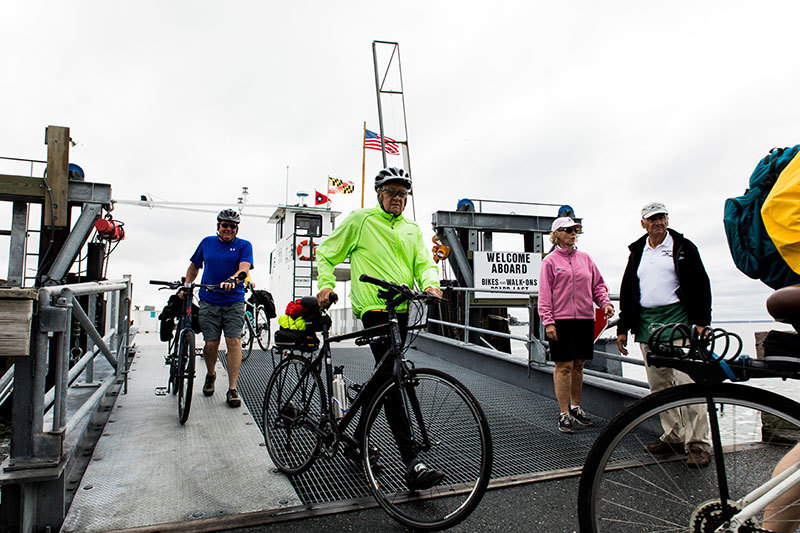
► The ferry route is included on one of the country’s top bike rides.
The Pacific Standard magazine once named the Bixlers’ baby the “most pointless ferry in Maryland,” and sure, as populations have dwindled (Oxford: 617, Bellevue: too few for the census), the ferry no longer acts as a school bus for children or taxicab for commuters between the two towns like it used to. After the last tourists leave for winter, Oxford’s few historic inns and two waterfront beach bars go as silent as a snowfall. But in the warmer months, sailboats bob along the strand, the beach fills with bikinis, leaf-peepers arrive in hoards to take in the region’s renowned foliage, and the ferry is once again packed full of people, cars, and bicycles, as the route has been named one of the top 25 bike rides in the country.
No matter when you ride, for eight short minutes and less than a mile of open water, the ferry exists for a moment of respite. For many, it harkens back to the disappearing “simple life”—a slice of Americana. Time slows down. The seasons change. The town doesn’t.
For a few others, that sentimentality even crosses into romance, with the occasional passenger popping the question or coming onboard to renew their vows.
And after nearly 50 years together, 17 of them as the ferry’s captains, Tom and Judy are still pretty smitten themselves. “This is a splendid place,” says Tom. “We watch the osprey come and go. We’ve watched the eagles come back. And that’s the point of being on the Eastern Shore. You’re not in a hurry. You don’t get anywhere fast. You’re just here to enjoy life.”
In the off-season, he and Judy find time to travel, visit family, and handle the majority of the boat’s maintenance before the next season rolls around, often by Oxford Day, which this year lands on April 28. “The ferry has been here for so long—it is such a landmark,” says Judy. “Everyone wants to keep it going—they feel like it’s their ferry, too. And so we always say we’re not going to let anything happen to it on our watch. We’ve worked really hard to make sure it lasts another 100 years.”
“Plus, I tried retirement,” adds Tom with a knowing grin, his face still tan and his boat shoes creased from a thousand climbs up the ferryboat ladder. “Clearly it didn’t work.”
